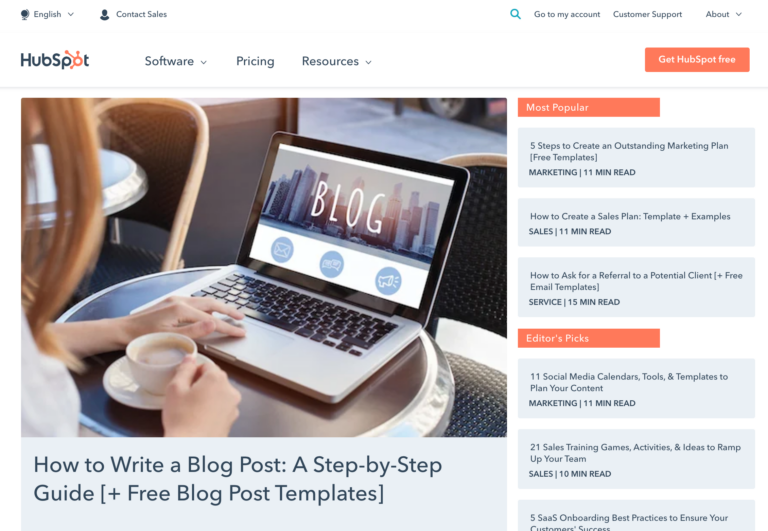8 Quick Keyword Research Hacks for B2B SaaS
Intro
Keyword research? New topics to write about? The two blend together for me.
One leads into the other and then back again. At least that’s how I work.
Below are a few of the keyword research techniques I use. Sometimes these will match up perfectly with your familiar keyword tools. Other times (like my Twitter example) it’ll be more topic-based that can help you create content relevant for your audience.
Reach out to me (hey, I’m Josh!) at josh@growthcontent.io with any q’s.
1. Try action words like “find” or “buy”.
Classify these as transactional or high-intent, but what I often find is that you may not be exploring all of the high-intent, buy-now words. Ones to try include “find,” “buy”, “hire,” “download,” “learn,” or “install.”
For example, “learn to code” receives more than 30,000+ searches per month according to Keywords Everywhere. I’m pretty positive that everyone in that space knows that is a top keyword, but it is just a example that you could also try. Results will vary, of course.
This hack depends heavily on your industry and niche, but it’s worth experimenting with these variations to see the types of results you may get.
2. Add modifiers like “good” or “best” or “cheap” or “cool”
Instead of going after a general keyword, add a modifier to it for more keyword ideas and the opportunity to narrow it down.
“Best hoodies” for example has solid search volumes with more purchase intent than “hoodies.” Users are interested in finding the top of the line, or the cheapest, or the simplest or the easiest.
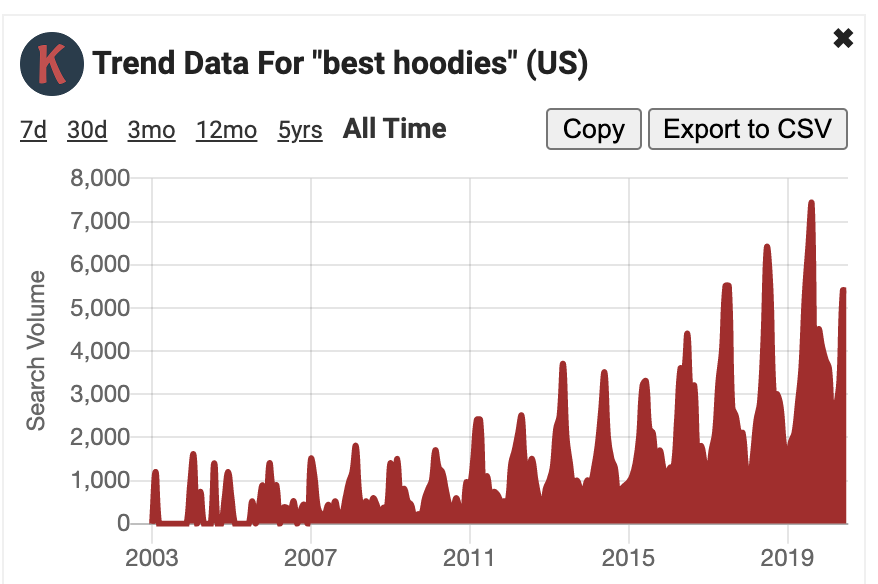
3. Search “[Brand] Alternatives”
The “Alternatives To…” method is now very popular. The typical formula is to outline:
• How your product is the top competitor in the market to the more popular one
• How other similar products compare to yours (while always positioning yours as the best…if it is)
This is getting to be a crowded space, especially since sites like Capterra and Software Advice are building whole businesses out of this model.
I have built several of these pages in my content marketing career and they are often quite competitive. Here is one from my former employer, Workzone:
25 Best Asana Alternatives (Free & Paid) at Workzone (Currently #1 for Asana alternatives)
Those pages did quite well for us when I worked there, and seem to still be performing well for a conversion-focused, high-intent search:

What’s the secret to great alternative pages?
- Use searches like “[Brand] alternative” or “[Brand] competitors”
- Thoroughly research your competitor and share your results fairly
- Provide accurate representation of what your own product can can’t do
- Make it easy to compare: Create charts, feature comparisons, and share screenshots/videos of what your product does
4. Create Comparison Pages
Once you get a bit of market share, you may see the searches change to include your product within the search results. Having an increase in branded search is a good sign.
These are the comparisons, and they often take the form of “this” vs “that.”
One of the most famous versions of this is the Drift vs Intercombattle royale, in which Drift has created one of the best and most alluring landing pages while rightly framing their competitor.

The page for Asana vs Trello is another good example, giving users a quick and easy comparison chart, emphasizing what Asana does have…and what Trello doesn’t.

Ahrefs shows that this page is a top-performer for Asana. It has lots of searches, plus shows high-intent.
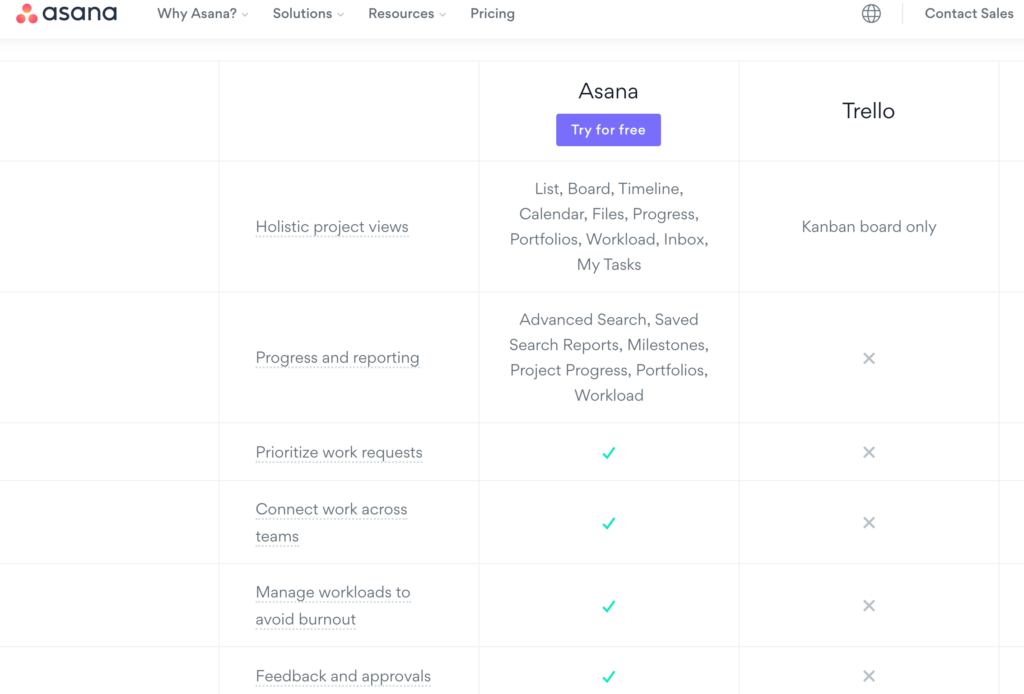
Sites like AlternativeTo.Net and others take a more newsy-objective point of view, even though many of them are affiliates or advertising sites.
What’s the secret to great comparison pages?
• Don’t list every feature element—only list the ones that show how you stand apart.
5. Create Pricing Comparisons
Take comparisons a step further is to investigate pricing for your brand and top competitors. Obviously, when users search for this topic, they are probably looking for that brand’s pricing, not an interloper offering their own comparison on the pricing.
A popular SaaS category is marketing automation and Pardot is one of the category leaders, and is owned by Salesforce. They have lots of adoption even if they may not be the best fit for most companies. A user searching for “pricing” shows high-intent and is in decision mode.
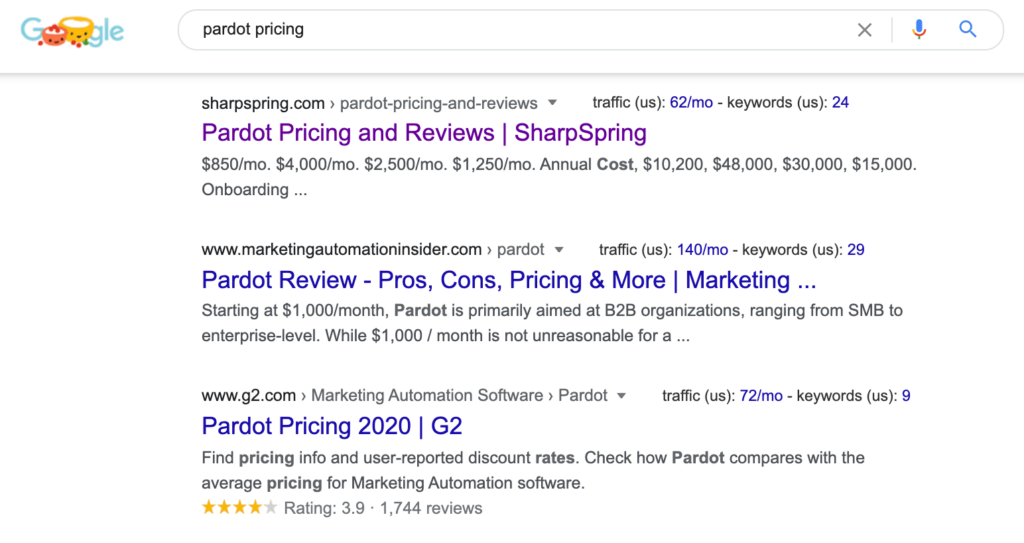
Sharpspring is a marketing automation competitor, but other sites like G2 are interested in capturing the traffic and then potentially redirecting to another tool.
Should you create a pricing page about your competitor?
This will be hard to do in every niche. Many companies will not post their pricing or keep it hidden behind the ever-elusive “Request A Demo.”
This is a good tactic if your competitors are quite large in your industry.
Depending on your niche and search volume, it may be a better play to list competitor pricing within your comparison or alternative pages. The larger your competitor, the more likely this tactic could work.
6. Research “People Also Ask” Questions
This is not really a hidden secret anymore and it’s a fairly easy way to uncover lots of great keywords. Once you start searching for a given topic, take a look at the People Also Ask questions and click on those results as well.
Switching topics a bit (but related!) let’s check out CRMs. So I typed in CRM pricing.
Here’s the result and you’ll notice several good questions about pricing that you may want to incorporate into a comparison pricing page (see point above) or even incorporate them into your product pages.
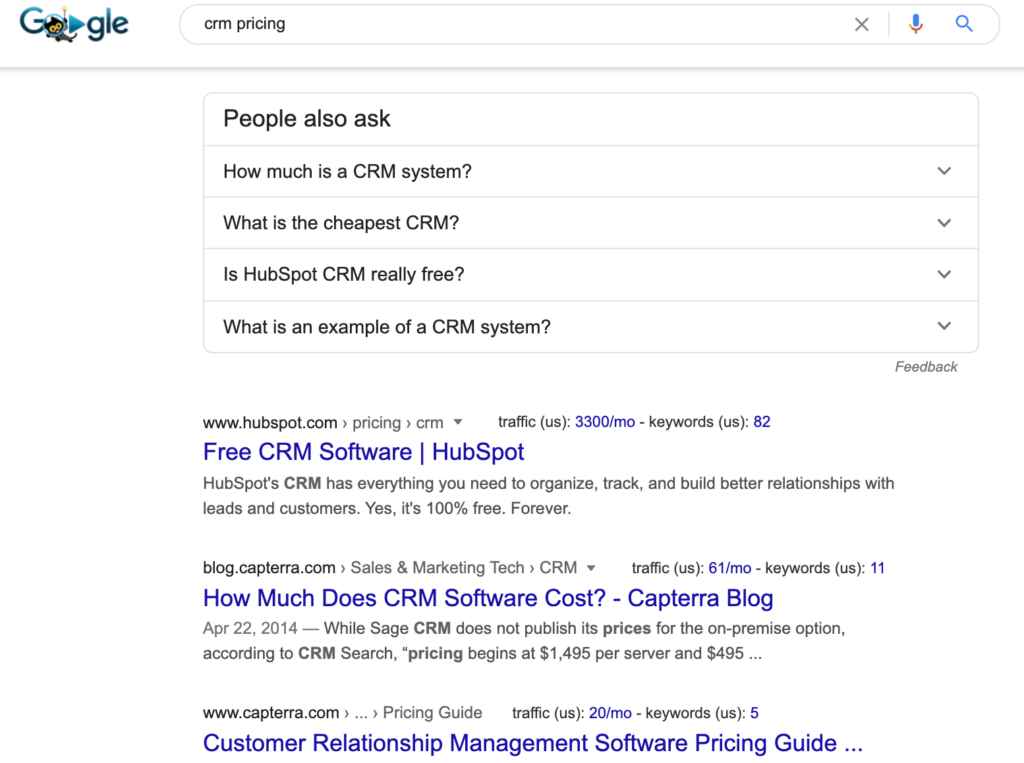
Random Tip: The intent of “CRM pricing” is mid-funnel—they are solution aware, but not product-aware. In this case, I’d create a blog post about “How Much Should You Pay for CRMs?” or “How Much Do CRMs Cost?” and use the keyword in the slug like this: greatcrm.com/blog/crm-pricing
How to download all the “People Also Ask Questions” right away
Tools like Ahrefs and AnswerThePublic offer “questions” that you can answer, but there’s an easy way to go to the source and get lots of great questions quickly.
It’s from a Chrome Extension called SEO Minion. I mostly use it to check on-page SEO elements, until Steve Toth (from SEONotebook.com) gave away an awesome tip on how you can get all those questions for a given search term and then optimize it for the pages that drive in the most traffic.
People Always Ask questions usually don’t have listed search traffic, so you have to re-engineer that process for the top pages that appear as the answer to one of those questions. You can manually insert each URL into AHREFs to see traffic, or use Steve’s method for a quick batch analysis.
Bottom line, “People Also Ask” questions can give you lots of content topics for the future.
7. Reverse the #1 result to find other keywords it ranks for
TL, DR: I wrote a whole post on this, so go there for all the details.
If you’re stuck in keyword research and it’s hard to break through on your main head terms, another option is to target additional keywords that the top result is ranking for. Much like with the People Also Ask questions, plug the URL into Ahrefs and find keywords that the content also ranks for but may not be at the top. This gives you an opportunity to go after those secondary keywords in a more targeted way.
8. Research social media (Reddit, Twitter, Quora, YouTube) for topics
Each of these networks are usually thought of for promotion or how people are talking about your brand (social listening), but they can also be very valuable as “topic listening tools” (is that a thing?)
And you don’t even need Buzzstream or something like that for the research part.
Instead, a nice advanced search on each of those sites will help you turn up valuable keywords for your content. You can then see how people are talking about these topics, not just if they are talking about the topics.
Instead, it’s user generated content that you can then answer and feed back into the machine (I mean back to users!)
Yes, you may even want to connect with the individual who gave you a great blog idea, but try and resist the urge to promote right away.
I’ll be doing longer posts on how to do keyword research on each of these (Reddit was the first), but here’s a quick look at Twitter Advanced Search, which is underused in my opinion:
1. Search for your topic or keyword, with a few limits:
You want this to be broad, but not overwhelming:
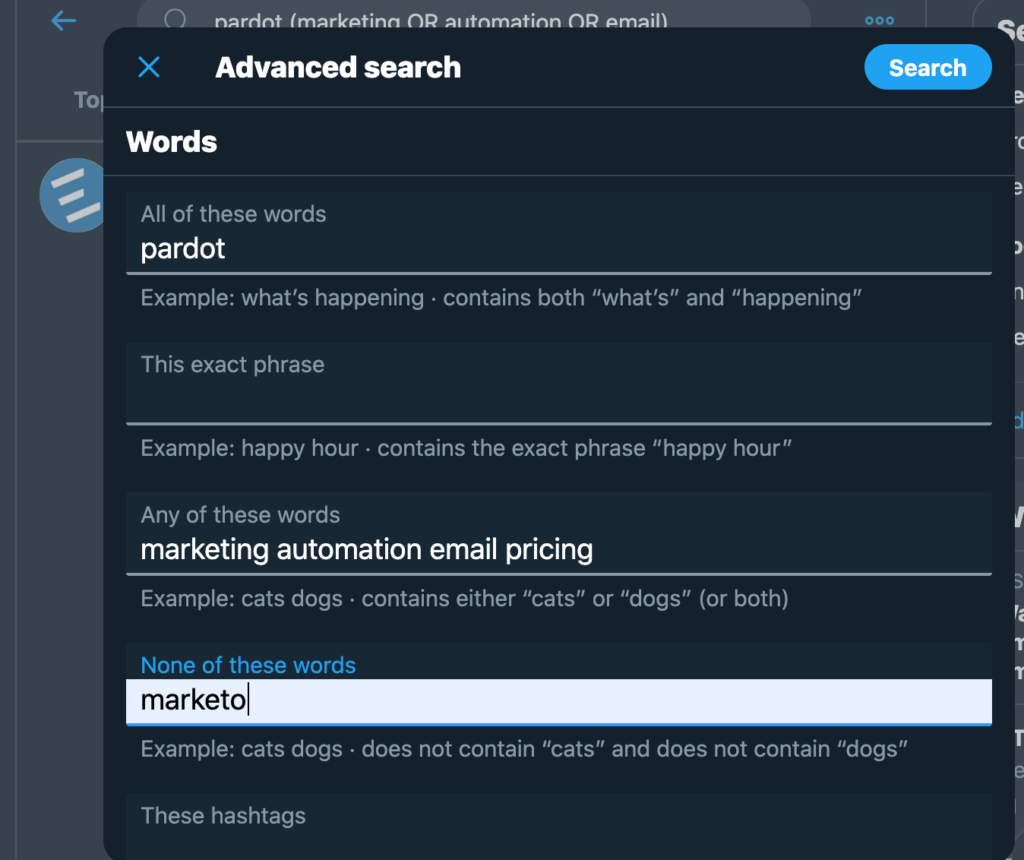
2. Locate potential topics

Your topic would be something like: “How To Identify Targets For Your Email Campaigns.”
3. Run It Through Your Favorite Keyword Tool
A little more work with Keywords Everywhere and you’ll eventually get to this:

Not bad huh? A little more work and you can probably turn up way better stuff than that.
Conclusion: What Other Keyword Tactics Do You Use?
A lot of these are pretty easy to execute on without a huge amount of technical knowledge. A lot of the SEOs out there can run circles around me with some amazing tools for some crazy advanced keyword research tips.
Do you have any keyword research tips that have worked well for you?


